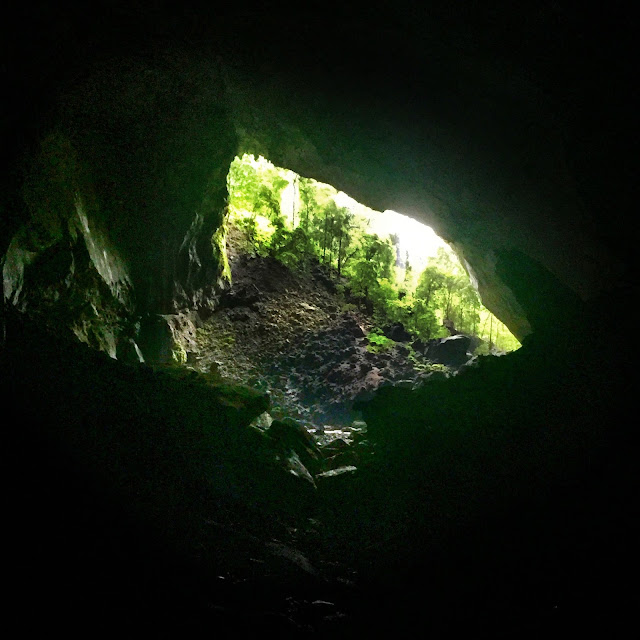This is the second day of our expedition, we hopped on the longboat and visited a native Penan village near Melinau river. FACT according to my research: Penan people are the last remaining semi-nomadic people in Malaysia.
The settlements by the river.
Indigenous people live a simple life. The women will look after the family while the men go out to work. Their regular income is through farming, hunting, and tourism. I was really impressed by the nearly dying traditional handicraft bead work and weaving.
There are wooden cutleries, basic traditional musical instruments like the nose flute, fake blow pipes (harmless), weaved basket, mats, woven bracelets.
I personally bought a number of beaded bracelets and key chains from them, wanting to share it among my friends back in Kuala Lumpur. (Shout out to Jo, Son, Mark c, and Kim!)
NOTE: Prices are negotiable with the Penans, but don't bargain ridiculous prices, be reasonable.
Misty morning at Penan Village, Mulu
We continued our journey along the Melinau River, and stopped off at the Cave of the Winds. It is also part of the Clearwater Cave system.
There are a series of steep stairs that leads up to the Wind Cave, tourists would need stamina for this! ;) But trust me, the climb is definitely worth it.
This unique species of monophyte (single leafed plant) grows at the mouth of the cave, towards the sunlight. They only grow on limestones.
The name 'Cave of the Winds' came about due to its cool breeze that blows of the cave mouth. As if we were in an air conditioned room, the cave was breezy and the wind was strong.
At the end of the Wind Cave's passage, lies the famous King's Chamber (the main reason why I mentioned that your treacherous steep climb up to this cave will be totally worth it)
Columns formed by stalagmites and stalactites. Stalagmites are the limestones from the ground, and stalactites are the limestones from the ceiling.
ps. I will never forget my geog teacher Ms Maddy's phrase: "The tights go down, and the mights come up!" Catchy, ain't it? As long as it helps you to remember.
Let's give it another hundred years...this stalagmite and stalactite will join!
We turned back and headed out of the Wind Cave entrance and continued our journey in reaching the Clearwater Cave, which is the longest cave system in Southeast Asia. It is larger than Deer Cave, and largely unexplored. It is about 107km long. However, only the first few hundred meters are accessible to tourists.
There are actually two wats of reaching the Clearwater Cave. The first option is to trek from the Wind Cave's nature trail, which is 4km and it takes about one and a half hour. The second option is to take the long boat which takes only 15 minutes. Needless to say, most tourists take the long boat, and that includes us.
Stairways into the Clearwater Cave. The gushing sound of the underground river could be heard.
A ray of hope.
Mulu caves contain different types of unusual floral and fauna too. Most of the creatures living in this pitch black are often described as the 'isolated' ancient group survivors, or 'living fossils'.
This helictites, also known as lateral formations, are photokarsts. They are tiny needles of rock that will point towards the light as you shine on it. How dramatic!
At the end of the passageway, we climbed down the steps which led us to the deck area. At the base of the steps was a crystal clear pool with water flowing out of the cave. It is a perfect swimming hole, all natural and shallow. Tourists can freshen up after hiking in the caves in this cold water if they wish to do so.
Our cave expedition ended after this trek and hike into the caves. We rested for about 45 minutes before returning by the longboat.




































































